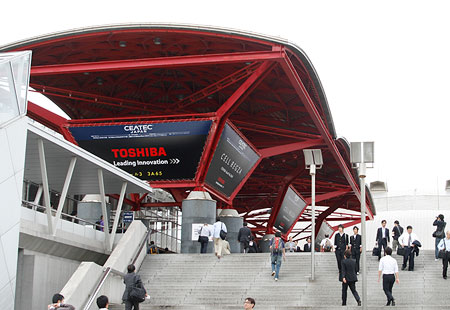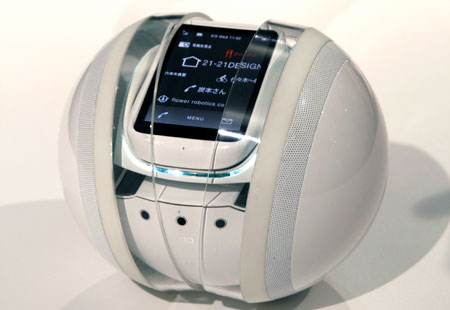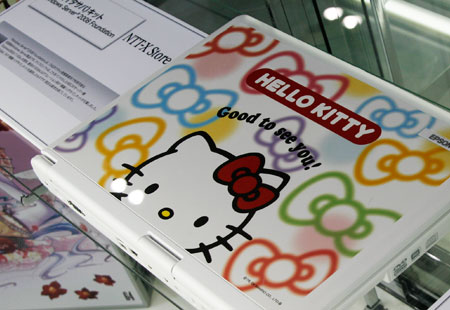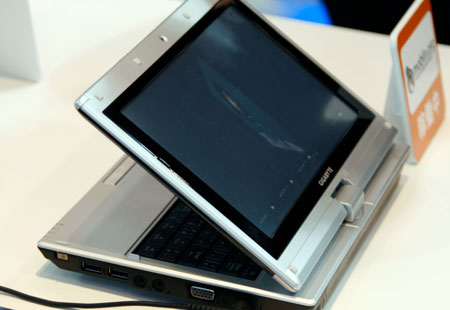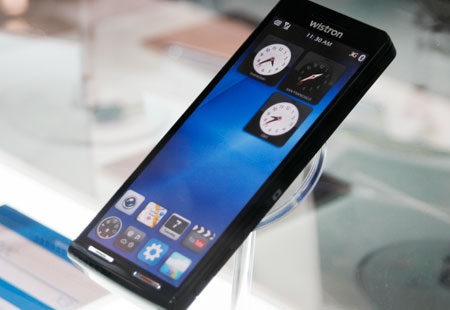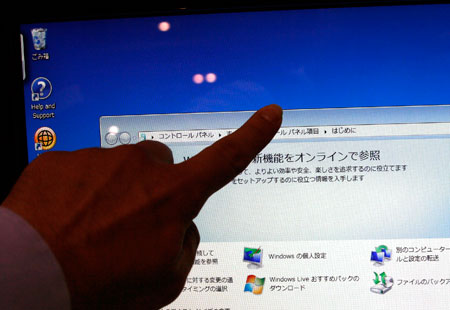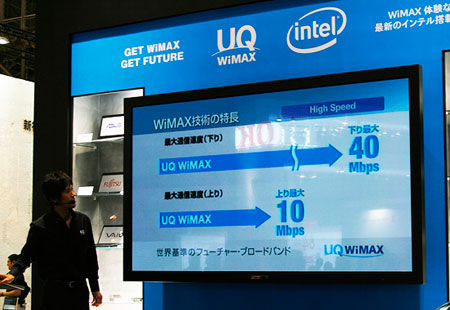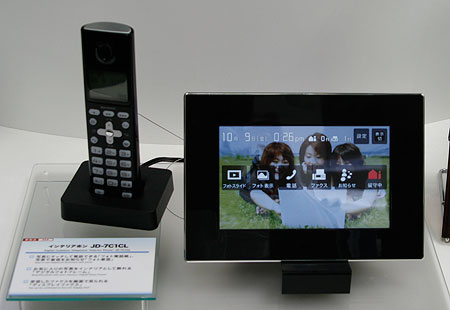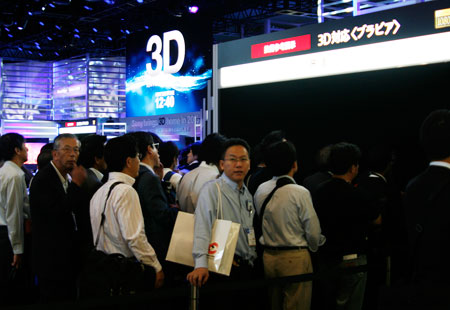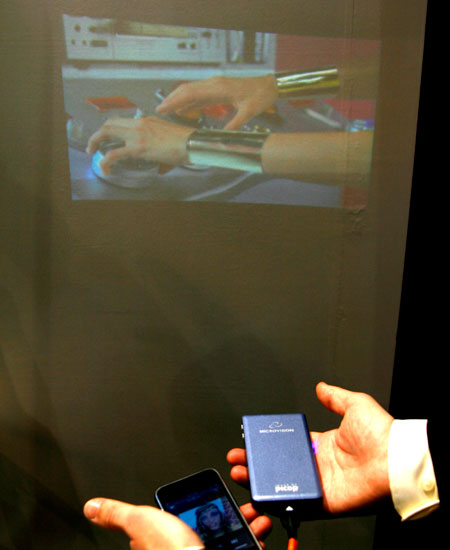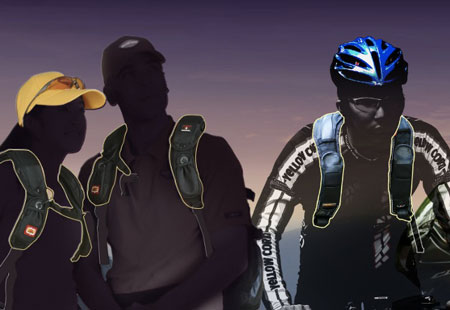On to wrap up the post about CEATEC. I was only there for most of one day, so I did not get to see everything; also, the fact that most everything was in Japanese only hampered my ability to fully understand everything I saw.
Nonetheless, there was some interesting stuff; though much was pre-existing tech, a lot was still fun to see and play with.
For example, this electronic whiteboard:
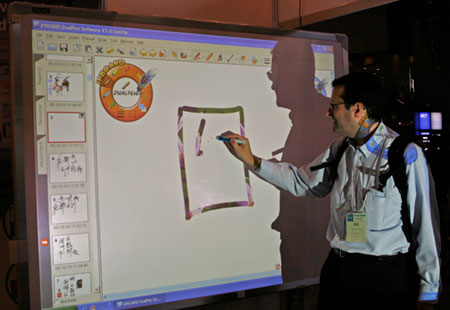

The projector they had was at waist-level, so it was hard to write without blocking the area you were writing on; this setup is intended to be used with a ceiling-mounted projector (which would not solve all of the problems, but would help). It’s not the sexiest system–having a projector behind the screen, or making the whiteboard itself a display would be far better. But for $1000, it’s a relatively cheap setup–and I can imagine doing a lot with this in my computer class. The whiteboard software can call up any image or file on a computer and make it interactive with what the lecturer is doing. It can also call up saved screens with prepared content. There is a LOT I could do with this thing in my computer class.

Strangely, I had never seen an OLED in person before this. They do seem very nice–high contrast, rich colors. I hear they’re weak outdoors, though.
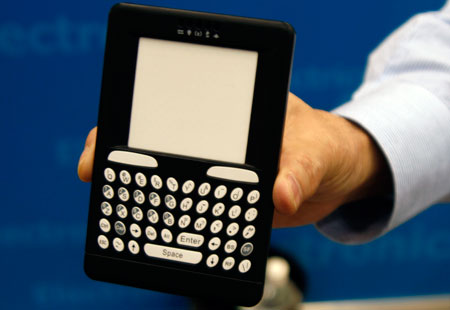
One guy was pitching “the world’s smallest keyboard.” Um, maybe, if you mean one that’s a remote keyboard–I am pretty sure that smaller ones exist on portable devices. And I’m not really sure how he verified that no smaller remote keyboards exist, but OK. This device looks kinda fun, until you start trying to think of situations where you really need it. Like a lot of other tech at the show, this was more along the lines of “it looks cool but adds minimal functionality.”
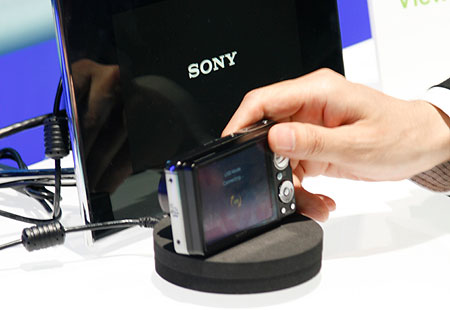
Here’s another example of that ‘limited functionality’ thing: wireless upload of images from a digital camera to the computer. This was at Sony’s booth. Just place the camera on the pad, and presto! The photos download and display. Except that when it was displayed, it suffered from glitches (didn’t connect a few times; the rep had to fiddle with it), and was kind of slow uploading. Plus, there’s been an easier way to do this for a while: the Eye-Fi Wireless SD card, an SD memory card which will automatically upload your photos to a WiFi network as you take them, or when you come in range of a network. It was also at the show, looking for a distributor.

TDK had several tech items on display, including these 320 GB optical disks. Promises, promises. There have been tons of “coming soon” super-high-capacity media promised over the years, with very few actually making it to market.

This is cool: flexible solar panels. I am sure that they are useful somewhere.
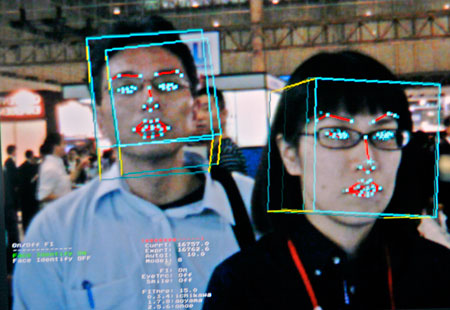
Terminator-Vision!! No, actually, it was facial recognition software Sony was showing off.


This was more for industrial use, but was very interesting to see in action. As you can see, it tagged me as being 90% male, 100% adult, and definitely not a baby or a senior. It figured that I probably had both eyes open and had a hint of a smile, but didn’t see my glasses too well.
The use of this became apparent when the rep explained it to me: a camera would accompany a digital advertising display which would alter its content based upon who was looking at it. If mostly women were looking at the ad space, it would display ads aimed at women; same with different age groups. Presumably the smiling would help gauge the effectiveness of ads. One can imagine other uses for this as well.
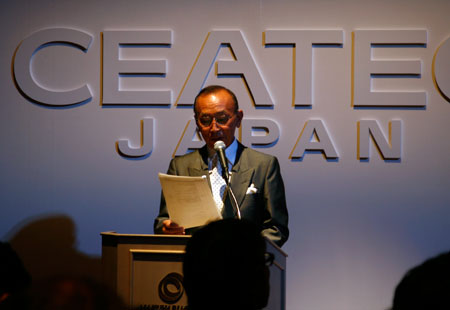

Finally, there was the panel discussion on personal computing undergoing a transformation, which was, as I mentioned in the last post, mostly just PR pitches by the execs. I wish they had discussed advances in multi-touch and non-volatile RAM, the possible development of quantum computing, the implementation of facial and body recognition in UI development, specific timetables for adoption of wireless standards, and other stuff I hadn’t even heard of yet. But no, it was mostly about stuff they were actually currently doing, tame stuff like using cloud connectivity (heck, I use that now), with lots of references to how cool Windows 7 is going to be.
One thing that Fujitsu showed actually did seem pretty neat:
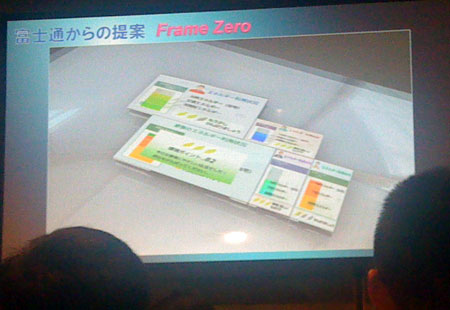
I think the name comes from the fact that the displays cover the entire surface of the devices, with no frames–and the devices communicate wirelessly to connect and make larger displays. The exec pulled out a non-functioning sample to show a netbook and a cell phone which both had the exact same depth, so that when you put the cell phone next to the side of the netbook, you essentially extend the netbook display by a few inches.
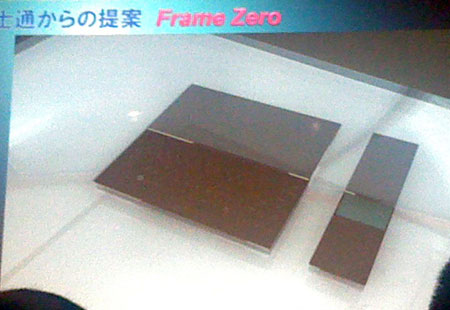
Then you could add any number of such devices to continue to increase the size of the display.
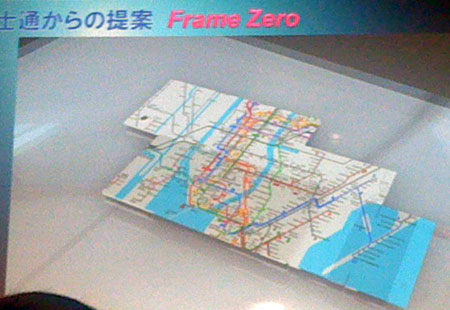
Pretty nifty concept. Once you think about actually using it, though, its value becomes less striking–maybe adding a few inches to one side could be nice, but when would you really get more than two devices together in a situation where joining them to make a larger display would be viable and useful? Hard to see that happening much.
But still, it’s cool. That’s the main point!
Unfortunately, the end of my visit to CEATEC was marred by NHK, something I should have seen coming when I approached their booth. NHK is Japan’s public TV network–more like the BBC than PBS in that it’s driven by ‘required’ payments by everyone, and their door-to-door collectors are more or less universally disliked. Most people in Japan refuse to pay when the collectors come–technically, you’re supposed to, but I believe there are no penalties for not paying. NHK is kind of like a state-run, state-friendly behemoth which many see as outdated and unnecessary.
The only thing I really wanted to know about was their progress on the next level of HDTV. Pre-HDTV sets had a resolution of 480 (or 525, depending on how you count them) vertical lines; HDTV goes up to 1080 lines. The next generation quadruples that, going up to 4320 lines of resolution. Imagine taking 16 HDTV screens in a 4 x 4 grid–that’s the same resolution you’d get with one single “Super-Hi-Vision” TV.
I came to the NHK booth to ask for info on that, and the guy there said they had one on display, urging me to enter their booth and see it for myself. OK, cool, I though, momentarily forgetting who I was speaking to. So I joined the queue, and waited for 20 minutes, using up the last half-hour of my time at CEATEC. Finally, I got in, and walked past lame displays of this-is-what-a-living-room-looked-like-in-the-60’s, and past a mini-theater showing what 5.1 Surround sound was like. I kept asking, “Where’s the Super-Hi-Vision?” and people kept saying, oh, it’s right over down that way, check it out!
So naturally, when I finally got there, they were shutting it down. Unapologetically, the NHK rep had a “too bad” attitude, and was even a bit condescending about it, as if it was perfectly natural to urge people to wait in line for something and then refuse to extend a display for two minutes to show them what was promised. What kind of idiot are you?
That sour end note aside, CEATEC was a fun event and I did get some fairly useful intel from it. Not as much as I expected, but I learned some stuff–in part, what to expect from such shows, and how I might better approach the show when it comes again next year.
















